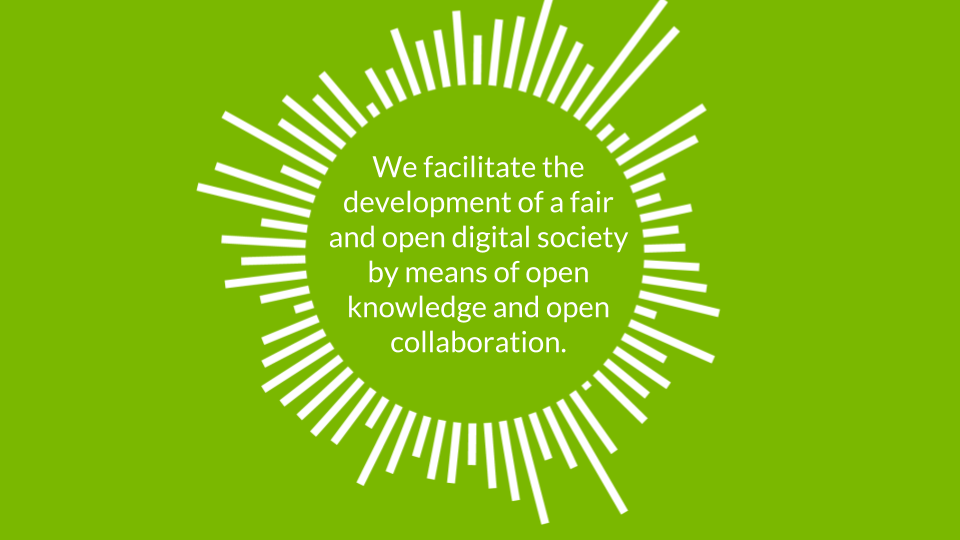
Tuesday 23.10.2018 16:30-18:30 Maria 01/Classroom:
https://www.facebook.com/events/321675121922917/
Click here for the event slides: http://okf.fi/ci-helsinki
Professor Thomas Malone from MIT, author of the book Superminds – The Suprising Power of People and Computers Thinking Together, defines Collective Intelligence as “the result of groups of individuals acting together in ways that seem intelligent.”
Collective Intelligence is nothing new. In nature we see superorganisms like ant colonies that are able to coordinate their collective efforts without centralized overview. Humanity has developed their own models of Collective Intelligence that have, according to Malone, taken for example the forms of hiearchies, democracies, markets, collectives and ecosystems.
However, with the rise of connected technologies based on the Internet, data, AI, IoT and Blockchains to start with, the issue of creating new forms of Collective Intelligence has risen. As Thomas Malone puts it:
“How can people and computers be connected so that—collectively—they act more intelligently than any person, group, or computer has ever done before?”
We are starting to have very diverse examples of this phenomenon ranging from Open Source communities, Amazon’s Mechanical Turk that organizes crowds to work on repetitive tasks, Google’s search engine which uses AI and clicks done by humans to prioritize search results and the largest encyclopedia ever made in Wikipedia. But what we don’t have yet is a general understanding on what makes people and machines work together in the best possible ways and how to harness that knowledge to solving problems at scale.
I was privileged to be invited to and participate in Nesta’s event Designing collective intelligence – Mobilising humans and machines to address social needs which sought to bring together the community of people working around the topic.
You can check out the presentation materials here:
– Event presentation materials
– Event outcomes
– Examples of Collective Intelligence Tools gathered by Nesta’s Designing Collective Intelligence team: https://trello.com/b/vf3cXUVG/collective-intelligence-tools
– Examples of Collective Intelligence Projects gathered by Nesta’s Designing Collective Intelligence team: https://trello.com/b/CdTeRRC6/collective-intelligence-projects
How might we promote the advancement of Collective Intelligence here in Finland?
This is the topic of our Collective Intelligence – Solving Problems at Scale event. You’re welcome to join in on Tuesday 23.10.2018 16:30-18:30 at Maria 01/Classroom.
Facebook event: https://www.facebook.com/events/321675121922917/
You might have stumbled into a competition where people are asked to guess the amount of candy in a large jar. Mysteriously, the average of all the people guessing turns out to be pretty close. You’ve heard the old phrase: the smartest person in the room is the room.
On the other hand, computers beat humans in simple, repetitive tasks at scale but humans tend to be more creative. What a combination it would be if we had the ability to harness crowds and operate both at scale and in a creative manner?
Nowadays drones are used in humanitarian crises such as hurricane relief to help with mapping areas in need of human assistance. A global, internet-enabled network of digital humanitarians is then used to do analysis of the footage to help with coordination efforts.
What if we could create organizations that were able to describe the tasks that need to be done to fulfil a purpose and distribute those tasks to a global network of freelancers that never sleeps?
Welcome to an evening of an intro into Collective Intelligence: Solving Problems at Scale hosted by Open Knowledge Finland’s Mikael Seppälä. Learn what it is and discuss where we might see the first examples of it in Finland.
Collective Intelligence is one of those rising multidisciplinary approaches that seeks to utilize different types of crowds, machines and enable collaboration that far exceeds the forms of collaboration we see today.
You can be a social scientist, a facilitator, a designer, a data scientist or just someone interested in budding forms of collaboration.
Sources:
Geoff Mulgan: Big Mind: How Collective Intelligence Can Change Our World
Nesta: Designing collective intelligence – Mobilising humans and machines to address social needs (event)
SAGE Publication’s new journal on Collective Intelligence
Collective Intelligence 2018: From Open Knowledge and Network Organizations to Technology-enabled Intelligence
Tietoasiantuntija 2-3/2018: Inhimillisyyden ja teknologian liitto johdattaa työn uudelle aikakaudelle
Potential next steps in promoting Collective Intelligence and Open Knowledge:

– Become a Open Knowledge Finland association member (it’s free!)
– Join Finnish Open Data Ecosystem if you’re into promoting Open Data
– Join the MyData Working Group if you’re intersted in promote the use of personal data to build human-centric services
– Join Social Innovation for Systems Change Finland if you’re into the use of open, social innovation to create Collective Intelligence that supports the development of cities, government and society
– Join ResponsiveOrg Finland to promote network organizations that use technology to create and act upon Collective Intelligence
– Join Participatory Smart Environment Lab to promote the usage of citizen sensor networks and using the data they create to inform the participatory development of lived environments
Leave a Reply